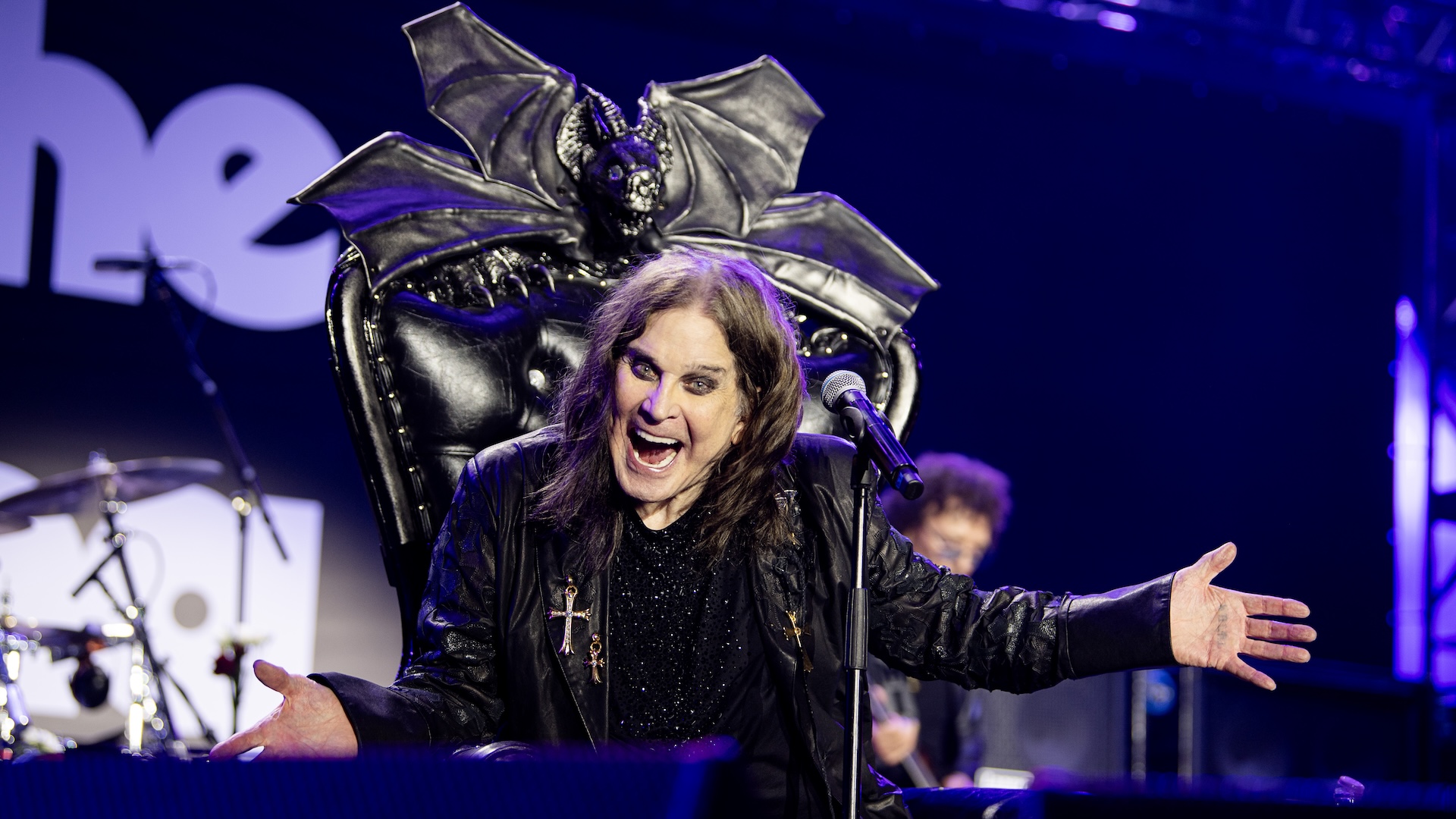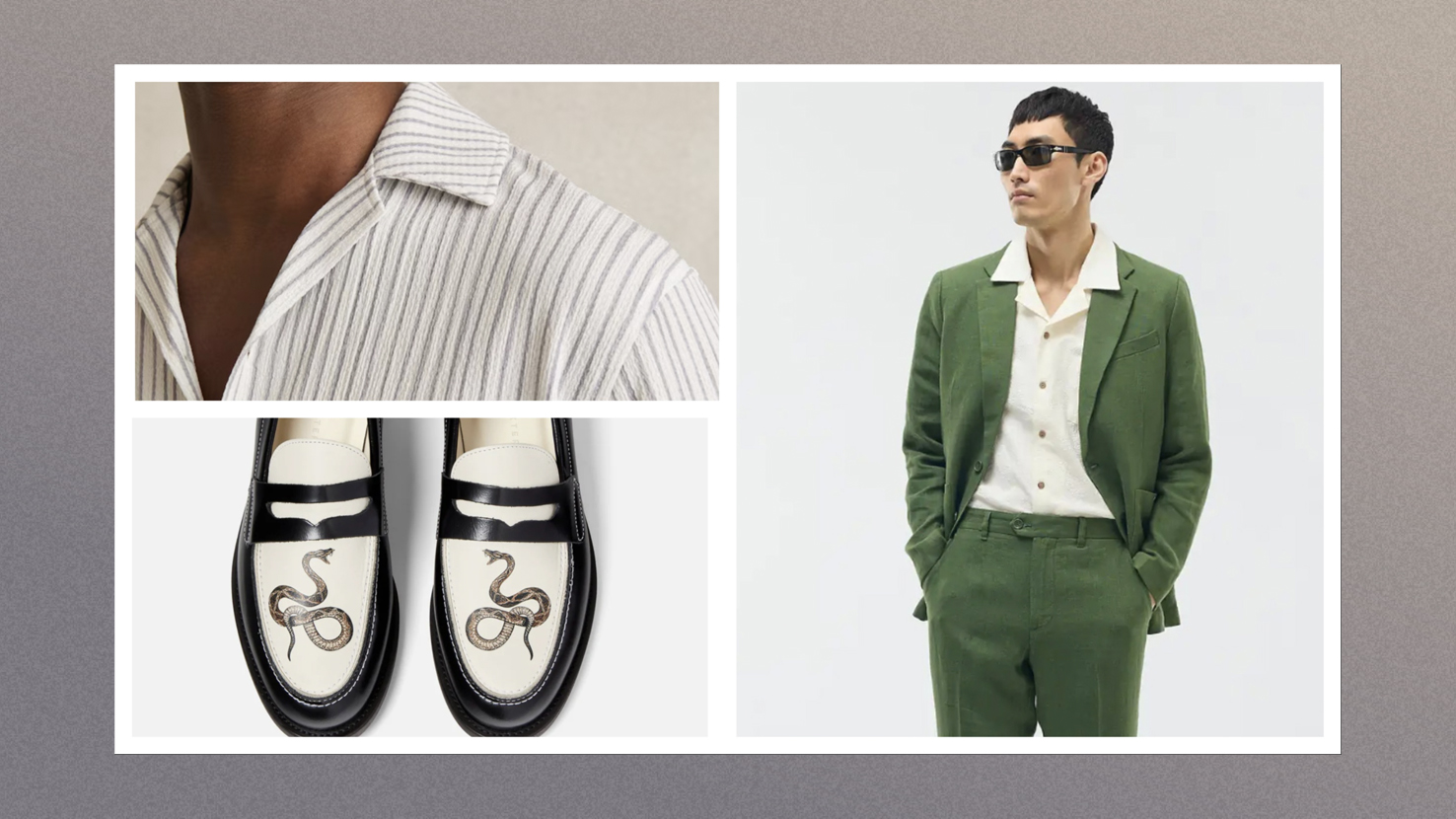
“I hate nature,”
Ron Timehin says, swatting away flies. In front of us, a rustic Italian field gives way to an epic panorama of the bay of Naples; a twinkling blue sea on which a lone cruise ship perches, tiny as a toy boat. Up here on the hilltop, an enormous dog is lying in the shade while an Italian nonna serves up iced limoncello in the barn next door.
“He does hate nature,” Ron’s friend Chris chimes in, laughing. To the clueless onlooker, the pair look like a travelling odd couple, two young guys out of their comfort zone in a tiny village above Sorrento. On Instagram, though, they command some serious respect. As @thetechcreative, Chris has more than 55,000 followers. Ron, aka @rontimehin, has closer to 60,000. Ron’s followers could fill the Emirates Stadium; combined, they wouldn’t even fit into Wembley.
You may also like

Inside the mega-mansions of the super-wealthy
A distant hum fills the air, growing slowly into a deafening roar as it gets closer and closer. Our helicopter has arrived. It lands on a patch of dry grass, kicking up a cloud of dust and debris. The dog scampers. A handsome Italian man in a suit and sunglasses ushers us towards the sliding doors beneath the still-spinning blades.
I’ve only been in a helicopter once, as a child, but to these guys it’s just another day in the office. When I ask Ron how it feels to live like this, to travel the world in your twenties as a professional Instagrammer, he has one word for me: “Blessed.”
Get exclusive shortlists, celebrity interviews and the best deals on the products you care about, straight to your inbox.
It’s all enough to make you ask: who the hell are these people?

Like for a like
If you’re not familiar with ‘Instafluencers’, ask your niece or nephew. They’re internet royalty, the uber-celebs of the digital age; people who eat the best food and travel to the best places for free, stopping wherever they go to share pictures of their perfect lives.
These are the envy-inducing men of Instagram; men with man buns and well-groomed beards, men who surf and skydive and ride motorbikes, men who eat #foodporn doughnuts and drink old fashioneds but still somehow have perfectly crafted six-packs. Men who are as at home looking pensively at sunsets as they are promoting new brands of teeth-whitening serums.
Their lifestyle is non-stop, their hunger for likes is insatiable. They never stop travelling, they never get tired, they never stop sharing every detail of their lives. Who in their right mind would want to live like that?
“The male influencer market is booming, and I want to be a part of it”
Well, for one, me.
I’ve often dreamed of having a huge Instagram following, of getting to a point where my holiday snaps garner thousands of likes. Most people’s perception of an influencer is invariably female – tanned women posing in summer dresses and bikinis in front of escalatingly gorgeous and tropical backdrops. Yet the male influencer market is booming, and I want to be a part of it. Beyond the obvious muscleman fitness accounts and street-style bloggers, there’s an ever-growing market for men who just straight-up quit their jobs to take photos in fancy places. I set out to find out whether these guys really are living like kings, or if being slaves to their follower counts isn’t all it’s cracked up to be.
First up, a local hero. Even if you don’t recognise the name, you’ll be hard-pressed to find an article on London’s GOAT Instagrammers without some mention of Alex ‘@a_ontheroad’ Zouaghi. His timeline is replete with old-timey pubs, floral shop facades and colourful west London terraced houses; a Richard Curtis-eye view of London that bears little actual resemblance to the city in which I live. I’m expecting a foppish Hugh Grant type when I meet Alex outside one of his favourite west London cafés, but I’m greeted by a softly-spoken Frenchman in a cravat and blazer.
“Really, everything happened to me because I moved to Notting Hill,” Alex says, gesturing at the picturesque streets around us. “This was my playground, and I was just discovering new places day after day and posting them on Instagram. Four or five months in, I had 10,000 followers. It was then that things started to get a bit more exciting.”
Alex now has 180,000 followers, and is giving up his job as a Mandarin teacher to become an Instagrammer full-time. There’s a point in my conversation with Alex where he makes reference to his agent, then lets out an embarrassed laugh. “I hate saying that,” he says. “I’m not Brad Pitt. I’m not George Clooney. I don’t need an agent.” Which is something that people who definitely do need agents always say.
Most emails are rubbish, ours isn't
Get exclusive shortlists, celebrity interviews and the best deals on the products you care about, straight to your inbox.
If you want to know what someone with half a million Instagram followers is like, look no further than Patrick ‘@aguynamedpatrick’ Janelle. Arriving to meet me in the London Edition hotel, he strolls into the lobby like a Renaissance doge entering his palace. Everything is impeccable – his hair impeccably groomed, his stubble impeccably trimmed, the sleeves of his denim jacket impeccably rolled.
He looks like an aftershave advert, and yet he’s still not exactly what I expected from his profile. In person, the intimidating cocktail drinker and restaurant connoisseur I’ve seen on Instagram gives way to an infectiously enthusiastic American, albeit always with one eye on his phone.
I ask the awkward question first: how much does he charge per post? “I don’t want to disclose any specific numbers,” he says, with a smile. “But I’ll say this: I’m definitely earning more as an Instagrammer than in a full-time job.”

It shows: Patrick has built up a small creative agency from his influencer work alone, employing an office manager and keeping an editorial director and a photographer on retainer. This, combined with the cocktail app and the private member’s club he’s opened in New York, suggest he’s not doing too badly.
“Anyone within the 450,000 to one million followers range can charge over £5,000 per post,” says Kat Richardson, creative director at influencer experts The WaR Agency. “It’s harder to find really good male influencers with strong engagement, as opposed to female influencers,” Richardson says. “So it’s like anything: supply and demand. If there are [fewer of you], your value goes up.”
“I’m definitely earning more as an Instagrammer than in a full-time job”
Instagram celebrity suits Patrick. If he’s ever embarrassed to seek out the perfect shot, he doesn’t show it – he stands in the centre of the hotel lobby like an orchestra conductor, and points from pillar to cocktail bar to groups of bemused guests, looking for a prime place to take pictures. After he’s snapped a few, we head to another hotel nearby – specifically the Bloomsbury Hotel’s Coral Room bar. We are – or rather, he is – taking up an invitation to try its cocktail menu. On arrival, Patrick strokes the eponymous coral walls and exclaims how much he loves the colour. It’s easy to see that the bar has been designed with its Instagrammability in mind.
The next day, Patrick posts a picture. “Coral, white and blue,” the caption says. “Slightly off, but celebrating the 4th overseas, nonetheless, cocktail in hand at @thecoralroom.” He doesn’t reference that we were actually there on the 3rd – not that his followers would care. The picture gets 2,500 likes in a couple of hours.
Hashtag fatigue
I met Ron, the guy who hates nature, at Gatwick Airport. We shared a chartered plane to Naples with a gaggle of other influencers, the beginning of a cross-European odyssey to test the limits of Huawei’s new P20 Pro phone camera.
Ten years ago, a decadent trip like this would have been filled by opportunistic journalists. Now, it’s mostly opportunistic Instagrammers. By the time we reach Pompeii, I’ve never heard so much talk about lighting. Oh, and everything is ‘content’ – people nip off into side streets to “get some content” on their freshly provided Huawei phones, while others huff and puff about not having got enough. Landscapes are content, buildings are content, passers-by are content.
This isn’t so much a relaxing vacation spot as an enormous quarry of content, ready to be mined. Glimpsed over shoulders, camera rolls look like maddening art gallery corridors where the same image has been replicated a thousand times. One Instagrammer I talk to says he takes 20 or 30 shots for every image he posts; Patrick admits he can take “60, 70 or 200” photos and only end up posting one.

The next day, we head out on a private boat from Positano to Amalfi. Ron and Chris are onboard, alongside Geoff (pronounced Jee-off) Cooper, aka @geoffkcooper, another of the Instagrammers on the trip. Within seconds of stepping on the boat, Geoff posts an Insta story of himself dancing to Cardi B. By lunchtime, he’s spent enough time posing for pictures on the back of the boat to illicit a look of pure hatred from the grizzled captain.
“That’s the story of our lives,” he laughs, as we finally disembark. “Instagrammers are constantly getting frowned at. What you felt there, we feel like that all the time. You just have to give it a little giggle and brush it off.”

There is laughter, sure, thanks mainly to the sunshine and the bottomless wine. But there’s plenty of yawning as well. Everyone is constantly clutching coffee cups, or catching quick naps as we’re herded off to our next destination in the early hours of every morning. By day three I’m knackered. Talking to Ron, it’s clear I haven’t felt the half of it.
“What people see on social media isn’t the be-all and end-all,” he says. “There’s a lot of hard work. Most of the trips I go on, I have minimal sleep. I just came back from Canada and I was having two or three hours of sleep per night, on average, for five days. I did eight flights in six days. I’m doing three more in the next five days, then I’m flying to LA next week.” His eyes widen with frustration. “I don’t even like flying!”
Likewise, Alex rarely gets to take a proper holiday with his wife and baby son. “The people who follow me will never know that I woke up at 4am for this shot, or that I was waiting there for two hours. They don’t know that when I’m staying in a five-star hotel, I’m also putting my 18-month-old son to sleep at 7.30 and turning off the light so we don’t wake him up.”
“We all have a responsibility when we post something. Instagram life is not life”
I ask Patrick if deception is part-and-parcel of the Instagrammer lifestyle. “There are definitely dirty dishes in the sink that I don’t show. That’s the metaphor I like to use. But with anything we do, we like to present the best version of ourselves.”
Alex, on the other hand, is a little more sceptical. “I have really mixed feelings about that,” he begins. “It’s probably because I come from a teaching background and I know how vulnerable young people can be. We all have a responsibility when we post something. After all, Instagram life is not life.”
Numbers game
Over the course of the entire trip to Italy, Ron, Chris and Geoff will only post a handful of images between them. There are no pictures of the glorious four-course dinners, only a fleeting snap or two from the stunning roof of our hotel in Naples. Staring out of the window of the ascending helicopter as it sails over the hilltops and out on top of the ocean, it strikes me how weird that is: that all this is only worth that. Yet huge corporations will fork out thousands for Instagrammer approval, because they represent a perfect life that companies want their products to be a part of. If you want attention in 2018, it’s the influencers who’ll get it for you – but when everyone’s an influencer, it starts to seem like no one is.

Alice Paris, co-director at the Riad Yasmine in Marrakech, has had to limit the hotel’s influencer influx to one blogger per month. “We receive maybe five or 10 requests every day, asking for four- or five-night stays in return for Instagram posts,” she says. “People email and ask to be paid to stay with us. I’m giving you free accommodation and then you’re asking to be paid as well? What’s the point?”
In an interview with The Atlantic, Kate Jones, marketing and communications manager at five-star Maldives resort Dusit Thani, echoed these sentiments. “Everyone with a Facebook these days is an influencer,” she explained. “People say, ‘I want to come to the Maldives for 10 days and will do two posts on Instagram to 2,000 followers.’ It’s people with 600 Facebook friends saying, ‘Hi, I’m an influencer, I want to stay in your hotel for seven days.’”
When I ask Ron about this, he begrudgingly agrees. “The market is saturated,” he says, making it seem like it’s only a matter of time until the whole thing bursts – not good for aspiring influencers like myself. It’s a common worry, thus, the plan Bs are all in place. Patrick has his finger in a number of different pies, while Alex is focusing on creative direction and Geoff makes a living as a professional stylist. Ron is intent on building lucrative links with big brands: “I’d rather be followed by the CEO of Nike than 1,000 children,” he says, something that his younger followers might not like to hear.

Allan Hinton, who posts on Instagram as @chaiwalla, is well aware of the anxiety that comes with Instagram’s unstable future. “My stuff used to be a lot more portfolio-building,” he says. “But for the past six months in the back of my mind I’ve been thinking, ‘Oh God, it might not last for ever.’ I’ve got 160,000 followers – will that be enough in a year’s time?”
Romantic conceptions aside, the whole thing is all about numbers. These guys aren’t so much chasing the sunset as they are chasing an algorithm. Giving up your job to ‘live the dream’ might sound attractive at first, but when it involves 6am wake-ups and follower quotas and farming your private life for content, the ‘dream’ seems very much like just another job.
It takes a lot to curate your lifestyle to this extent, especially if you want enough followers to make a living – and while some may be able to do it, it turns out I’m not cut out to be an influencer after all. A while after I return to England, I realise I haven’t posted on Instagram in weeks. The idea of it suddenly seems pretty unappealing.
One of the last pictures I uploaded was from the trip to Italy, of the view flying over the Alps. Opening up the app again, I see Ron posted one of the same thing. “I will never get tired of this view!” his caption says. Something makes me think of Icarus. Or maybe I’m just jealous. His picture got 3,500 likes. Mine got 45.
ShortList joined Huawei on the Amalfi Coast to test out the Huawei P20 Pro. See more here
Photography: Will Bremridge
Additional Photography: Alice Griffiths
You may also like
- How one man became the unlikely face of British blokes
- Face value: How movies cast “ugly” characters – and how it feels to get the part
- I pitched the absolute worst ideas for TV shows to Channel 5 and MTV
- “I hated every woman”: Former incels explain how their virginity evolved into rage
Sign up to ShortList Daily for free
Get exclusive shortlists, celebrity interviews and the best deals on the products you care about, straight to your inbox.
-
 Ozzy Osbourne and Black Sabbath's final show — Back to the Beginning review: 10 of the biggest highlights from a star-studded farewell
Ozzy Osbourne and Black Sabbath's final show — Back to the Beginning review: 10 of the biggest highlights from a star-studded farewellWe were there, we were rocked — here's everything you need to know as the Prince of Darkness bows out.
-
 The best Men’s summer wedding outfits — an essential guide
The best Men’s summer wedding outfits — an essential guideSuits! Shirts! Shoes! Final touches!